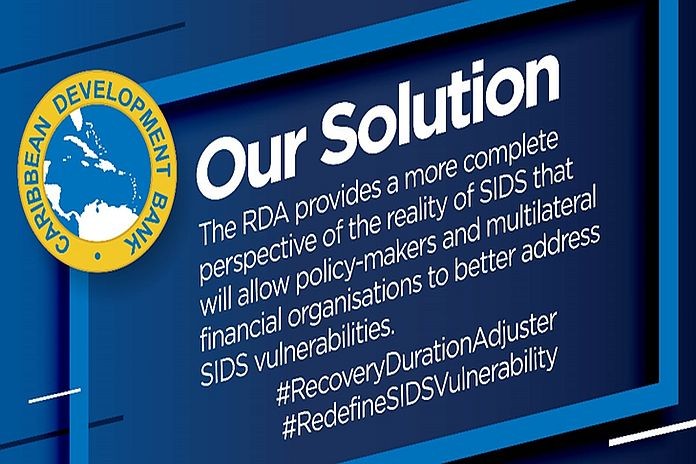BRIDGETOWN, Barbados — The Caribbean Development Bank (CDB) has distinguished its Recovery Duration Adjuster (RDA) from the United Nations Multidimensional Vulnerability Index (MVI), demonstrating how the bank’s framework is a more appropriate option for determining the level of concessional finance needed by Small Island Developing States (SIDS) for recovery from external shocks such as natural hazards and health crises like the COVID-19 pandemic.
CDB president, Dr Hyginus ‘Gene’ Leon has explained that Gross National Income (GNI), the metric currently used for classifying countries for access to finance, does not align with the Caribbean’s financial needs or development processes. He said, although the MVI indices are a clear improvement on raw GNI, they do not cover the extensive range of vulnerabilities currently impeding SIDS. The RDA, however, has been explicitly designed to make the MVI indicators better.
“The RDA framework integrates vulnerability and resilience in a dynamic and forward-looking manner that better reflects the economic, social, and environmental realities of small island developing states,” Dr Leon explained while delivering a presentation at the Alliance of Small Island States’ (AOSIS) SIDS Stakeholders Meeting today in Antigua and Barbuda.
In demonstrating how the RDA framework improves substantially on the MVI approach, Dr Leon outlined that the RDA, “introduces an important methodological shift from an index, that has inherent weaknesses, to a framework that can be customised to the specific circumstances of a country or region when an event takes place.”
He also specified that because the RDA is forward-looking, it enables policymakers to take decisions based on probable and possible scenarios; and it facilitates real time analysis of the evolving state of vulnerability and resilience to provide perspective on current or prospective shocks.
To further distinguish the RDA, Dr Leon introduced CDB’s concept of Internal Resilience Capacity (IRC) which reflects a country’s initial conditions and its capacity to recover from a shock. The RDA computes the country’s duration to recovery which would then provide the basis for expanded access to finance – in spite of income classification. Since a country’s ability to recover will vary according to IRC, GNI is an inadequate metric for determining access to concessional finance in the context of shocks that decimate capital and output and in which overall resilience is low.
“We propose, instead, an internal resilience capacity-adjusted GNI measure – the Recovery Duration Adjuster – that adjusts the GNI on the basis of duration to recovery, which we believe is a more appropriate and equitable measure for use in classifying countries for access to concessional finance,” Dr Leon said.
The CDB president indicated that developing and refining the RDA will require collaboration and the Bank is actively seeking strategic partnerships to accelerate the development and adoption of the framework.





